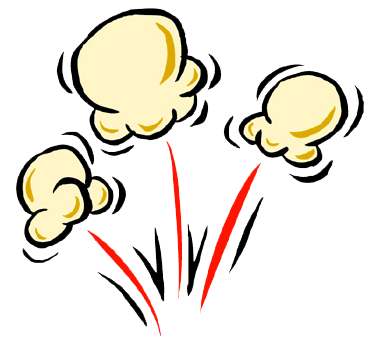Emergent Literacy Design:
Popping Like Popcorn with P
Rationale:
This lesson is designed to help children learn /p/, the phoneme represented by P. Students will be able to recognize /p/ in spoken words by learning a meaningful representation (popping popcorn) and the letter symbol P, practice finding /p/ in words, and apply phoneme awareness with /p/ in the phonetic cue reading by distinguishing rhyming words from beginning letters.
Materials:
-
Primary paper pencils
-
Chart with “Pam’s pretty penny turned purple.”
-
Drawing paper and crayons
-
Curious George Learns the Alphabet (Rey, 1963)
-
Word cards with PAT PECK MEET PACE BAG PAIN
-
Assessment worksheet identifying the letter P (assessment worksheet can be found here: http://www.kidzone.ws/kindergarten/p-begins2.htm)
Procedures:
-
Say- The alphabet is like a secret code. The tough part is learning what each individual letter stands for and how to move our mouths to make the sound. Today we are going to work on spotting the mouth movement for /p/. We spell /p/ with the letter P. P sounds like popping popcorn.”
-
“Let’s pretend our hands are popping popcorn, /p/, /p/, /p/. [Hands start in fists then open up]. Notice where your lips are? (Curled under). When we say /p/, air forces our mouths open creating the ‘popping’ sound.”
-
“Let me show you how to find /p/ in the word skip. I’m going to stretch skip out in slow motion. Your job is to listen for when the popcorn pops. Ready? Ssk-i-i-i-p. [Make /p/ choppy]. Slower: Sssssk-i-i-i-i-p. There it was! I felt my lips curl under and force air out. I can feel the pop in skip.”
-
“Now let’s try a tongue tickler [refer to chart]. ‘Pam’s pretty penny turned purple.’ Everybody say it together three times. Now say it again, but this time, I want you to break off the /p/ sound when it pops: ‘/p/am’s /p/retty /p/enny turned /p/urple.’”
-
[Have students take out primary paper and pencil]. “We use the letter P to spell /p/. Let’s practice writing the lowercase letter p. Start with your pencil on the fence, then go straight down past the sidewalk and into the ditch. Now pick up your pencil and place it back on the line just below the fence. Begin to make a backwards c until you hit the line again. Everyone show me your lowercase p. Now let’s do nine more. Let’s practice our uppercase P. Start at the rooftop, then make a straight line down to the sidewalk. Pick up your pencil and place it on the line just below the rooftop. Begin to make a backwards c, and stop once you touch the line again. Everyone show me your uppercase P. Now let’s do nine more.”
-
Call on individual students to answer and tell how they knew the answer: “Do you hear /p/ in animal or pet? Drop or pass? Present or gift? Let’s see if you can spot the mouth move /p/ in some words. Make your hands pop like popcorn when you hear /p/ and cross your arms in front of your chest if you do not: My, pet, pig, can, press, the, gas, pedal.
-
Look at an alphabet book. “Curious George learns all about the alphabet. He learns that penguin starts with the letter P. Let’s look at letter P and find out where penguins live.” Read pages 42 and 43. Emphasize the /p/ sound when reading the words. Have the students think of other animals or objects that start with the letter P. The students will then draw the animal or object they imaged to make it look like a P shape. (Example- draw a pineapple, and instead of making it shaped like an oval, it should be shaped like a P).
-
Show PAN and model how to decide if it is pan or man: “The letter P makes the /p/ sound, which sounds like popping popcorn. /p/ a-a-a-n. Pan. I know this says pan because my lips are curled and clenched, and the air forces my mouth open. So I know this word is /p/an. Now you try: PIN- win or pin? MAD- mad or pad? PAST- fast or past? SAY- say or pay? PINCH- synch or pinch?
-
To assess students’ understanding, hand out the worksheet and have them fill in the letters and color the pictures that begin with the letter P. Call on students to individually come to you to complete the phonetic cue words from step 8.
References:
Bruce Murray, The Reading Genie.
http://www.auburn.edu/academic/education/reading_genie/
Bruce Murray, Brush Your Teeth With F.
http://www.auburn.edu/~murraba/murrayel.htm
Darby Hayes, Popping Popcorn with /p/.
http://darbyhayes23.wixsite.com/portfolio/emergent-literacy-design
Mallory Haynes, Beating the Drum with B.
http://mlh0072.wixsite.com/mallory/copy-of-reading-lesson-plans
Assessment Worksheet: http://www.kidzone.ws/kindergarten/p-begins2.htm
Book: Rey, H. A. (2009). Curious George Learns the Alphabet. Boston: Houghton Mifflin Co.
Click here to return to the Horizons index.




